You are using an out of date browser. It may not display this or other websites correctly.
You should upgrade or use an alternative browser.
You should upgrade or use an alternative browser.
Somali E-Y18629 is a Bronze Age lineage from Egypt/Sudan
- Thread starter Al-Ma'mun
- Start date
Not sure but this lineage was probably from the Northern parts of the Eastern Desert not the Egyptian Nile ValleyWasnt that when Ancient Egypt fell from its peak??
Nilotes have been found in Somalia
Source? As far as I'm aware there only Nilotes in Western Eritrea (Kunama/Nara) and Western Ethiopia & Benishughul-Gumuz regionNilotes have been found in Somalia
I can't model Horners with any post Neolithic Levantine ancestry once our Yemeni stuff is accounted for, all i get is PPNB
Somalis unlike other Horners not only need Neolithic Pastoralists but also the more SSA (much higher Nilotic affinity) Pastoral Iron Age sampleI can't model Horners with any post Neolithic Levantine ancestry once our Yemeni stuff is accounted for, all i get is PPNB
The early Holocene deposits at Lake Besaka and Buur Heybe have provided the earliest evidence in the Horn of intentional human burial....Morphological features of the crania indicate Negroid affinities and can best be compared to the Sudanese skeletons of Jebel Sahaba and Wadi Haifa (McCown n.d.).Source? As far as I'm aware there only Nilotes in Western Eritrea (Kunama/Nara) and Western Ethiopia & Benishughul-Gumuz region
For many years the only prehistoric human skeletal evidence from Somalia was the highly fragmentary remains of at least two individuals recovered during World War II by workmen digging a trench at the Rifle Range Site, Buur Hakaba (Clark I954:251). The 1983 and 1985 excavations at Gogoshiis Qabe have now yielded 12 complete human burials from the Holocene deposits, bones of three of which have been ~4C dated to the early Holocene (Brandt in prep.). One individual dating to 6900 + 350 bp (Beta-7474) on the organic fraction and 5210 + 90 bp on apatite (Beta-7473) was buried on his stomach, with at least thirteen comptete sets of lesser kudu horn cores, still attached to the frontiers, placed directly over the body. A man and a woman dating to 5225 _+ 280 bp (UCLA-2705C) on the organic fraction were buried side by side and a pile of stones placed directly over them. Preliminary morphological analysis of these and the other skeletons (L. A. Schepartz pets. comm.; Brand t and Schepartz in prep.) indicates the presence of a regionalIy distinct population at this time, aithough affinities with the late Pleistocene/early Holocene Sudanese and Kenya Rift Valley populations are suggested.
Here it is, these remains are likely a Nilotic-like people, seeing as they cluster with Wadi Halfa and Holocene Kenyans(who cluster with Mesolithic Nubians), who show cultural similarities to Mesolithic Sudanese cultures (they practised incisor removal).
Lake Besaka is in Central Ethiopia, Buur Heybe is in Southern Somalia
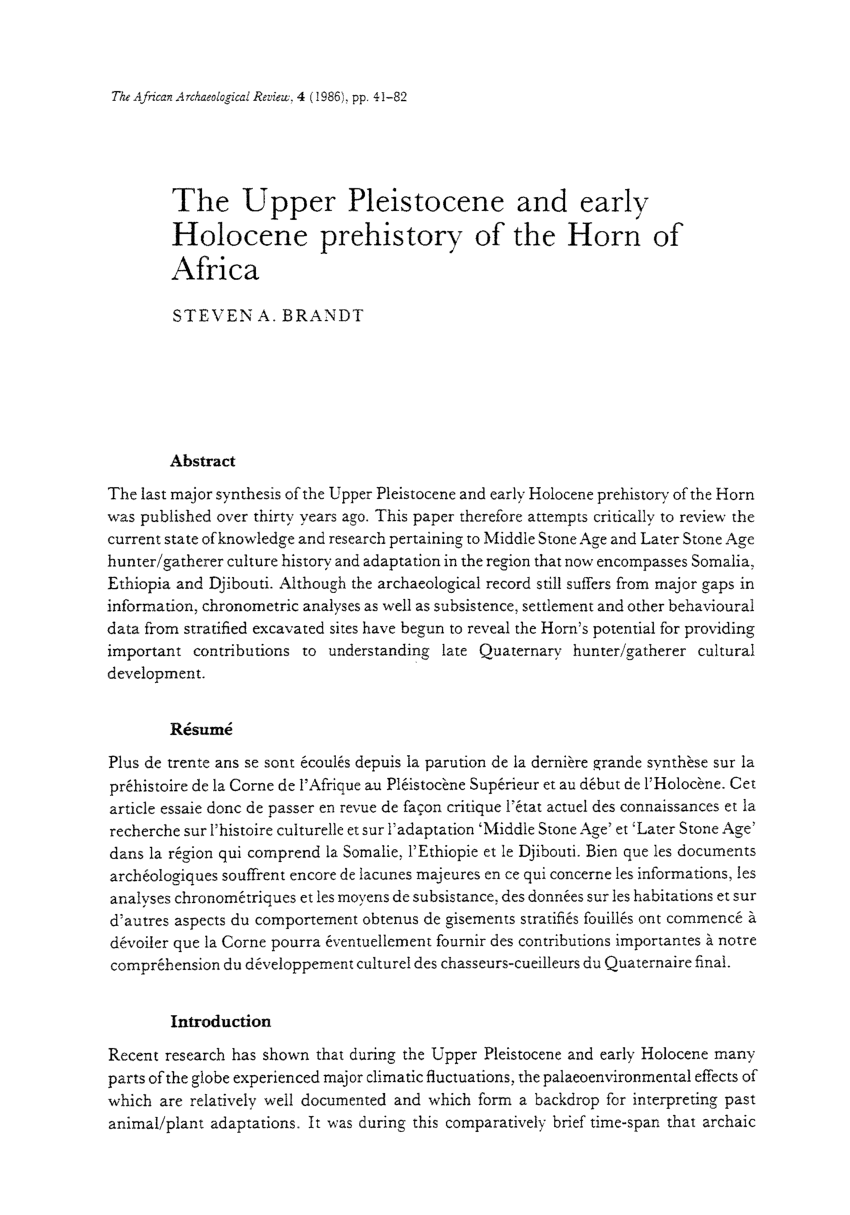
(PDF) The Upper Pleistocene and Early Holocene prehistory of the Horn of Africa
PDF | The last major synthesis of the Upper Pleistocene and early Holocene prehistory of the Horn was published over thirty years ago. This paper... | Find, read and cite all the research you need on ResearchGate
Or they could just be a very unique HG group of the Eastern Horn especially since it seems Somalis have very low to non-existent (depending on the individual) Mota ancestry compared to other Horners.Northern Horners would have had far more Mota-like ancestry if they didn't admix with the incoming Semites from ArabiaThe early Holocene deposits at Lake Besaka and Buur Heybe have provided the earliest evidence in the Horn of intentional human burial....Morphological features of the crania indicate Negroid affinities and can best be compared to the Sudanese skeletons of Jebel Sahaba and Wadi Haifa (McCown n.d.).
For many years the only prehistoric human skeletal evidence from Somalia was the highly fragmentary remains of at least two individuals recovered during World War II by workmen digging a trench at the Rifle Range Site, Buur Hakaba (Clark I954:251). The 1983 and 1985 excavations at Gogoshiis Qabe have now yielded 12 complete human burials from the Holocene deposits, bones of three of which have been ~4C dated to the early Holocene (Brandt in prep.). One individual dating to 6900 + 350 bp (Beta-7474) on the organic fraction and 5210 + 90 bp on apatite (Beta-7473) was buried on his stomach, with at least thirteen comptete sets of lesser kudu horn cores, still attached to the frontiers, placed directly over the body. A man and a woman dating to 5225 _+ 280 bp (UCLA-2705C) on the organic fraction were buried side by side and a pile of stones placed directly over them. Preliminary morphological analysis of these and the other skeletons (L. A. Schepartz pets. comm.; Brand t and Schepartz in prep.) indicates the presence of a regionalIy distinct population at this time, aithough affinities with the late Pleistocene/early Holocene Sudanese and Kenya Rift Valley populations are suggested.
Here it is, these remains are likely a Nilotic-like people, seeing as they cluster with Wadi Halfa and Holocene Kenyans(who cluster with Mesolithic Nubians), who show cultural similarities to Mesolithic Sudanese cultures (they practised incisor removal).
Lake Besaka is in Central Ethiopia, Buur Heybe is in Southern Somalia

(PDF) The Upper Pleistocene and Early Holocene prehistory of the Horn of Africa
PDF | The last major synthesis of the Upper Pleistocene and early Holocene prehistory of the Horn was published over thirty years ago. This paper... | Find, read and cite all the research you need on ResearchGatewww.researchgate.net
We have maternal and paternal HG lineages that seem specific to us Somalis like https://www.yfull.com/mtree/L0a1d1c/
I'm saying if there was movement from Egypt/Sudan within the past 3600 years into Somalia, surely Somalis should carry some post Neolithic Levantine ancestry such as Chalcolithic Israel for example. But the only Levantine groups needed to model Somalis once Yemeni ancestry is accounted for are Natufians and PPNB. Which shouldn't be the case if there was movement from Egypt/Sudan that recently.Somalis unlike other Horners not only need Neolithic Pastoralists but also the more SSA (much higher Nilotic affinity) Pastoral Iron Age sample
Though you did say it may have been from the Eastern Desert and maybe those regions weren't affected by post Neolithic Levantine movement, messing around with the Beja genomes could prove whether this is the case or not IMO.
The thing is even the Beja who stayed in the homeland only really have Arabian ancestry besides their Cushitic ancestry and can be modelled well with Ken_N + Yemeni.So my theory isn't even very far fetched tbhI'm saying if there was movement from Egypt/Sudan within the past 3600 years into Somalia, surely Somalis should carry some post Neolithic Levantine ancestry such as Chalcolithic Israel for example. But the only Levantine groups needed to model Somalis once Yemeni ancestry is accounted for are Natufians and PPNB. Which shouldn't be the case if there was movement from Egypt/Sudan that recently.
Though you did say it may have been from the Eastern Desert and maybe those regions weren't affected by post Neolithic Levantine movement, messing around with the Beja genomes could prove whether this is the case or not IMO.
Not sure but this lineage was probably from the Northern parts of the Eastern Desert not the Egyptian Nile Valley
Not necessarily. Lower Nubia was seemingly a historically Cushitic stronghold alongside the Eastern Desert, Atbay and the eastern coastal plain. The A-Group, the C-Group, the X-Group, and the Blemmyes all seem to have been some sort of continuity from what I can tell. In fact, as recently as the 6 century CE the Blemmyes (Beja) were in control of much of Lower Nubia having settlements like Qasr Ibrim, Faras and Kalabsha under their control:
Here's a letter from a Blemmye King imparting how they drove Nobatians out of Talmis (Kalabasha; their capital) at one point until they were finally defeated by Silko later on and driven into the eastern desert:
In fact, what I find interesting is that despite how the narrative is that the NS speaking Nubians drove them out of Lower Nubia and into the eastern desert around the end of the classical era, when the Arabs describe the early medieval Beja Kingdoms it seems pretty apparent that Lower Nubia is still predominantly Beja:
The Nūba, as they went to the western bank of the Nile, became neighbours of the kingdom of the Qibṭ, the children of Baisar<ref>Perhaps an alternative reading for Miṣr.</ref>, b. Hām b. Noah, and they established their kingdom there. Later on the Nūba further divided into two kingdoms. One was the kingdom of those called Muqurra, who settled on the eastern and western banks of the Nile and had Dunqula as their capital. It was this people who made peace with the Muslims and gave them the baqṭ; their country had palm-trees, vineyards and cultivated areas. The total length of this kingdom was about two months’ journey. The second kingdom of the Nūba, called 'Alwa, was more powerful than Dunqula; their capital was called Sūba. They had a large territory about three months' Journey. In their country the Nile branched off into several smaller rivers (khiljān) (Coll. UNESCO I, p. 191).
The kingdom of the Beja (mamlakat al-buja); They dwell between the Nile and the sea and are divided into several kingdoms, each governed by its own king.
The first kingdom of the Beja (al-buja) begins from the Aswān frontier. This is the last district of the Moslem territory stretching east and west from south to the frontier of Barakāt. They are a kind of Ḥabash called Naqīs, and their capital is called Hajar. They are subdivided into tribes and clans (buṭūn), as is customary among the Arabs; some of their tribes and clans [p. 72] are al-hadarāt [sic! obviously for al-ḥadāriba], Suhāb, al-'Amā’ir, Kūbir (Kūtir?), Manāsa, Ras'a, Arbari'a and az-Zanāfij. Gold mines, precious stones and emeralds are found in their country. They are at peace with the Moslems and the Moslems work in the mines of their country.
The second kingdom of the Beja is that of Baqlīn, which has many towns and is very large. Their religion is similar to that of the Magians (al-majūs) and the Dualists (ath-thunawiyya); they call the Almighty God by the name "az-zabhīr"<ref>A tentative Arabic script from the Ethiopian word Egziā’behēr (God). From this passage, one might guess that they were Christian (Conti Rossini, Storia d’Etiopia, p. 274.).</ref> and the devil by the name "sahāy harāqa". They pull out the hair of their chin and remove their central incisors.
The third kingdom is that of the Bāzīn, who border on the kingdom of the 'Alwa Nubians and the Baqlīn Beja, with whom they are, however, at war. The crop on which they live is ... [lacuna] ... which, together with milk, forms their staple food.
The fourth kingdom is called Jārīn. They have a dreadful king, whose rule extends from Bādi’<ref>Arabic: Bādi or Bāsaʾ (Tigre and Tigray: Batsa: Bade) is the old name of Massawa Island.</ref> on the Red Sea coast, to the frontier of Barakāt in the territory of the Baqlīn, until a place called Hall ad-dujāj. They, too, remove their upper and lower incisors lest - they say they resemble the teeth of asses; they also pull out the hair of their chins.
The fifth kingdom is that called Qat'a [Ibn Hawqal: "Qas'a"], the last of the Beja kingdoms. It is very large, extending from Bādi’ to a place called Faykūn. (source)
Notice how it is the first Beja Kingdom that is where the frontier with non-Muslim lands begins and that it starts just below Aswan. Then notice how the Beja Kingdoms only begin to properly border NS speaking Nubian (Nuba) kingdoms like Alodia ('Alwa) by the third Beja Kingdom of Bazin while generally centering the NS speaking Nubians more south like Dongola. It's also pretty clear that the Beja of this time aren't simply desert dwelling pastoral nomads even though, like with their Cushitic kin to the south, that probably would have always been the majority of the populace's occupation:
The second kingdom of the Beja is that of Baqlīn, which has many towns and is very large.
The third kingdom is that of the Bāzīn, who border on the kingdom of the 'Alwa Nubians and the Baqlīn Beja, with whom they are, however, at war. The crop on which they live is ... [lacuna] ... which, together with milk, forms their staple food.
So it's entirely possible E-Z813 was somewhere along the Nile Valley as well and made its way to Upper Egypt then Lower Egypt and the Levant from there. 2300 BCE isn't even that far back. Ancient Egyptian civilization was nearly a thousand years old by then and the Kingdom of Kerma already existed whilst the A-Group culture is more than a thousand years older. Kinda weird to think that our male line ancestor may very well have been among some of the earliest Medjay mentioned and that Agaw-East-South Cushites may have been in what have, in more recent history, been Beja lands.
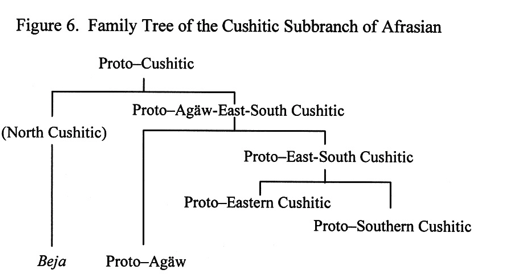
I'm still skeptical cos it's confusing how the Horn only enters the metal and civilizational age (as far as I know) after 1000 BCE seemingly due to South-Arabian influences but man would it be a doozy if so. I always looked at Sudan/Nubia's history after 3000 BCE as "the history of our close relatives but not ours". Weird to think that at least until around 2000 BCE or so it still might have been "our" history too.
Last edited:
@Shimbiris gonna hijack this thread to ask a question. is it true that daroods are part arab? since allegedly the original somali that began the clan was the prophets cousin.
@tariq moses
As @Al-Ma'mun probably remembers me and some others sharing many years ago, there is also some weird stuff out there linguistically speaking like how there seem to be linguistic influences in Nobiin not simply from North-Cushitic but from even East Cushitic like Highland East Cushitic:
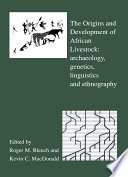
I always dismissed this as just being weird and probably someday dispelled by further study but there is other odd stuff like how the Somali word for "King" (Boqor) is similar to the Meroitic word for King (Qore) and some posit that it's a loan into Somali (or probably its ancestor) from Meroitic and all the interesting Ancient Egyptian cultural borrowings Somalis seem to show as noted by Mohammed Diriye Abdullahi:
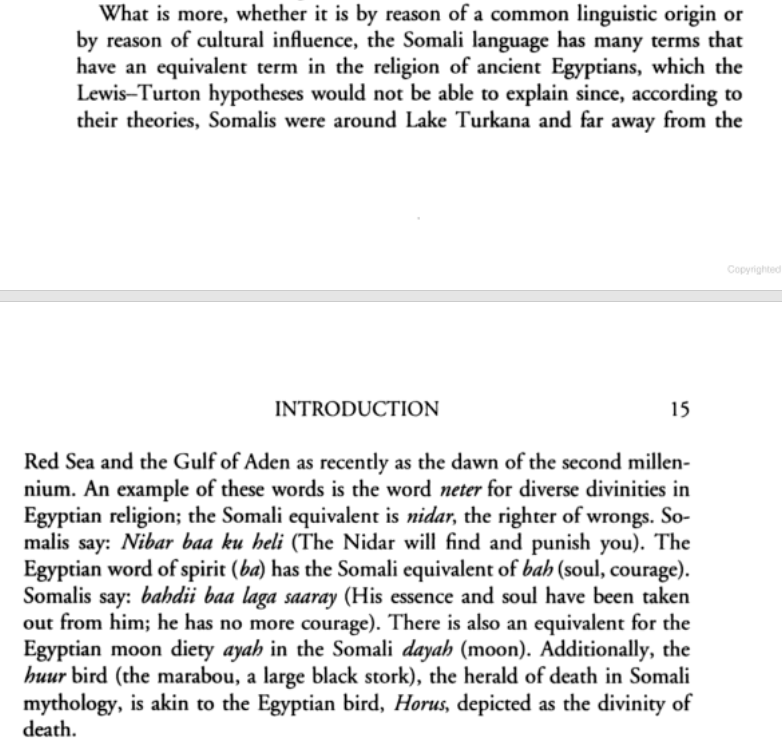
Food for thought, I guess. Maybe East-Cushites or some part of our ancestry was in Sudan longer than some think. But again, the biggest hole is metallurgy. Sudan was in the Bronze-Age by about 2500 BCE. If any of our ancestry as Horners was there after that it begs the question as to why we didn't have things like metallurgy, writing and monoumental architecture until after 1000 BCE:
One can argue that we were just descended from some splinter group of Eastern Desert pastoralists but even then I assume they would have been familiar with metallurgy at the very least so, again, it doesn't add up. But I admit Horn archaeology needs a lot of work and metallurgy may go back farther then I currently think it does.
As @Al-Ma'mun probably remembers me and some others sharing many years ago, there is also some weird stuff out there linguistically speaking like how there seem to be linguistic influences in Nobiin not simply from North-Cushitic but from even East Cushitic like Highland East Cushitic:
The Origins and Development of African Livestock
This book presents an interdisciplinary overview of the origins of African livestock, placing Africa as one of the world centres for animal domestication. With sections on archaeology, genetics, linguistics and ethnography, this collection contains over twenty contributions from the field's...
books.google.ae
I always dismissed this as just being weird and probably someday dispelled by further study but there is other odd stuff like how the Somali word for "King" (Boqor) is similar to the Meroitic word for King (Qore) and some posit that it's a loan into Somali (or probably its ancestor) from Meroitic and all the interesting Ancient Egyptian cultural borrowings Somalis seem to show as noted by Mohammed Diriye Abdullahi:

Food for thought, I guess. Maybe East-Cushites or some part of our ancestry was in Sudan longer than some think. But again, the biggest hole is metallurgy. Sudan was in the Bronze-Age by about 2500 BCE. If any of our ancestry as Horners was there after that it begs the question as to why we didn't have things like metallurgy, writing and monoumental architecture until after 1000 BCE:
The Horn is a little confusing, to be honest. I wonder why influences from Sudan died down after the Neolithic. Sudan is responsible for pretty much the biggest cultural shift in Horn history. In just a century or so by 3000 BCE the Horn goes from the Paleolithic to a culture that uses cattle, goats, sheep, donkeys, shepherd/hunting dogs, pottery as well as bows and arrows while also leaving behind megaliths, rock-carvings, cave-paintings and practices grain-collecting that eventually morphs into local farming of crops like durra and ensete. This culture also seems to overrun a wide area very fast. Around the same time-frame they're all over Ethiopia and both north and south along the Somali Peninsula. Very mobile people who eventually made it all the way to southern Africa.
Yet, for some reason, influences from Sudan don't seem to continue, at least probably outside of northern Eritrea and parts of northern Ethiopia. I say this because the Horn, if I'm not mistaken, remains Neolithic until around 1000 BCE when the Proto-Ethiosemtiic (PES) people begin to come from Yemen whereas our Sudanese homeland entered the Bronze-Age by about 2500 BCE and was pretty much neck and neck with the cultures in the Near East and eastern Mediterranean in terms of civilization.
Kerma circa. 2000 BCE:
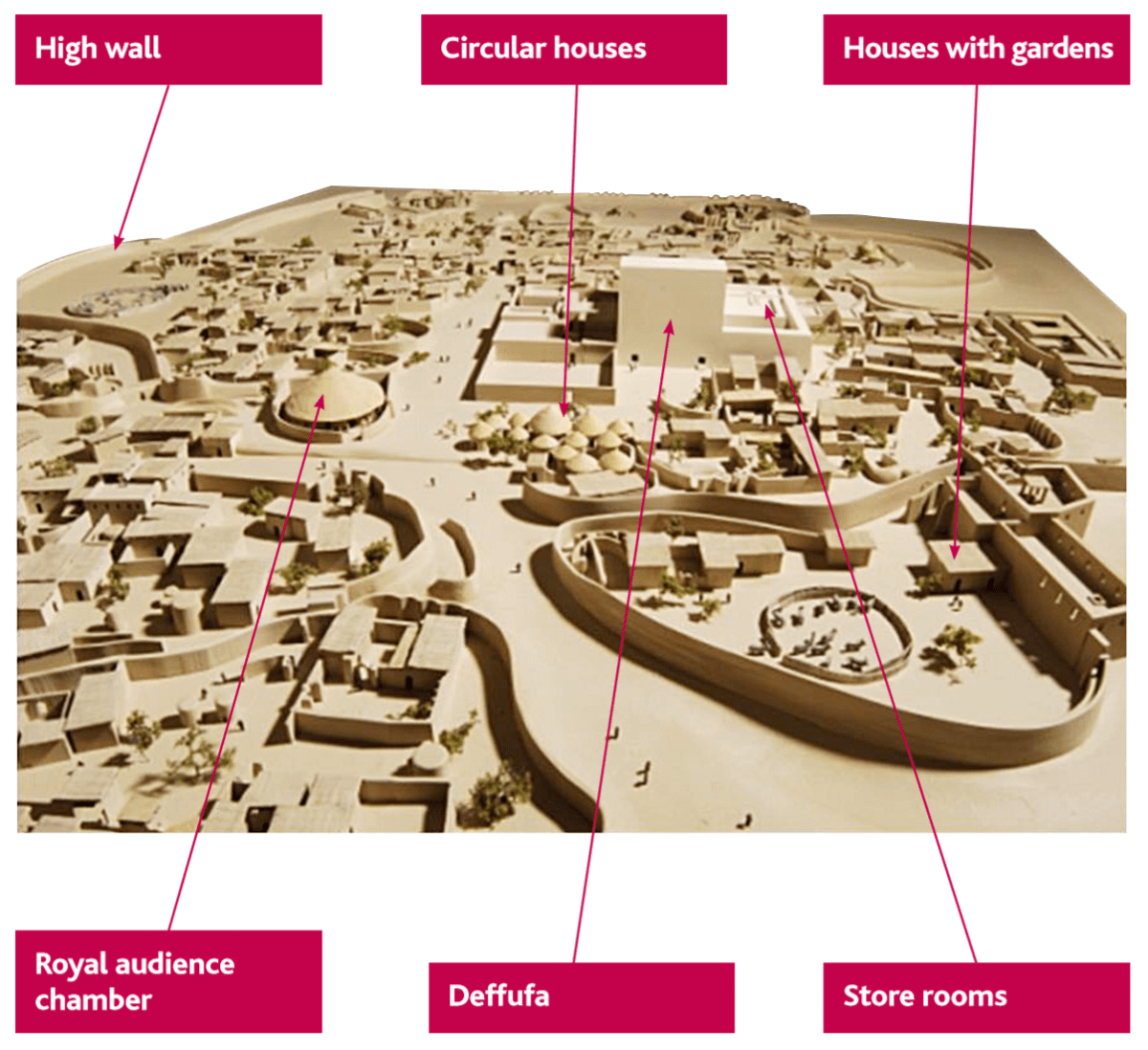
Kinda makes you wonder why the Horn didn't enter the Bronze Age as well as the civilized age with them. Things like proper towns/cities, writing, monumental architecture and extensive global trade don't seem to become a thing with Horners until after 1000 BCE from what I can tell. This also puts any holes, I think, in the idea that there were waves of migrations from Sudan into the Horn. I think there really was just one single migration of Proto-Agaw-East-South Cushites and that was it. The genetic differences that seem apparent between those early Pastoral Neolithics and modern Horners may have been there from the start.
One can argue that we were just descended from some splinter group of Eastern Desert pastoralists but even then I assume they would have been familiar with metallurgy at the very least so, again, it doesn't add up. But I admit Horn archaeology needs a lot of work and metallurgy may go back farther then I currently think it does.
Egyptian/Nubian society was highly stratified, the metalworkers may not have been the ones who migrated into the Horn, i believe there was increased aridity in Sudan for over a millenia ever since the Sahara started to dry, this may have forced out the ppl who relied on pastoralism, whilst those who were metalworkers may have been able to accrue resources via their metalworkings and didn't have to rely on the land. Just an idea but who knows. Or they were driven out of the Nile Valley, into the Eastern Desert where they lost knowledge of metallurgy and then spread into the Horn.
Or metallurgy taboo may be older than we think, I believe Tuaregs(they claim an origin in the "East") have a metallurgy taboo, and Proto Berber was spread from somewhere near the Nile Valley, so there may have been subsets of the Nile Valley population who held these negative views towards metalworkers, maybe they were the ones who settled in the Horn....
Or metallurgy taboo may be older than we think, I believe Tuaregs(they claim an origin in the "East") have a metallurgy taboo, and Proto Berber was spread from somewhere near the Nile Valley, so there may have been subsets of the Nile Valley population who held these negative views towards metalworkers, maybe they were the ones who settled in the Horn....
Egyptian/Nubian society was highly stratified, the metalworkers may not have been the ones who migrated into the Horn, i believe there was increased aridity in Sudan for over a millenia ever since the Sahara started to dry, this may have forced out the ppl who relied on pastoralism, whilst those who were metalworkers may have been able to accrue resources via their metalworkings and didn't have to rely on the land. Just an idea but who knows. Or they were driven out of the Nile Valley, into the Eastern Desert where they lost knowledge of metallurgy and then spread into the Horn.
Or metallurgy taboo may be older than we think, I believe Tuaregs(they claim an origin in the "East") have a metallurgy taboo, and Proto Berber was spread from somewhere near the Nile Valley, so there may have been subsets of the Nile Valley population who held these negative views towards metalworkers, maybe they were the ones who settled in the Horn....
It is very interesting how Horners have a uniform metallurgy taboo. Though, to be fair, this sort of taboo spreads to a lot of other things like leatherworking, masonry, overall artisanal work, hunting and soothsaying. I always saw it as our ancestors just having it out for anyone who wasn't a farmer or pastoralist but it is a little interesting how some of these pursuits seem like something certain classes in Ancient Nubia and Egypt would have done, something the majority agriculturalists (whether farmer or herder) wouldn't have done:
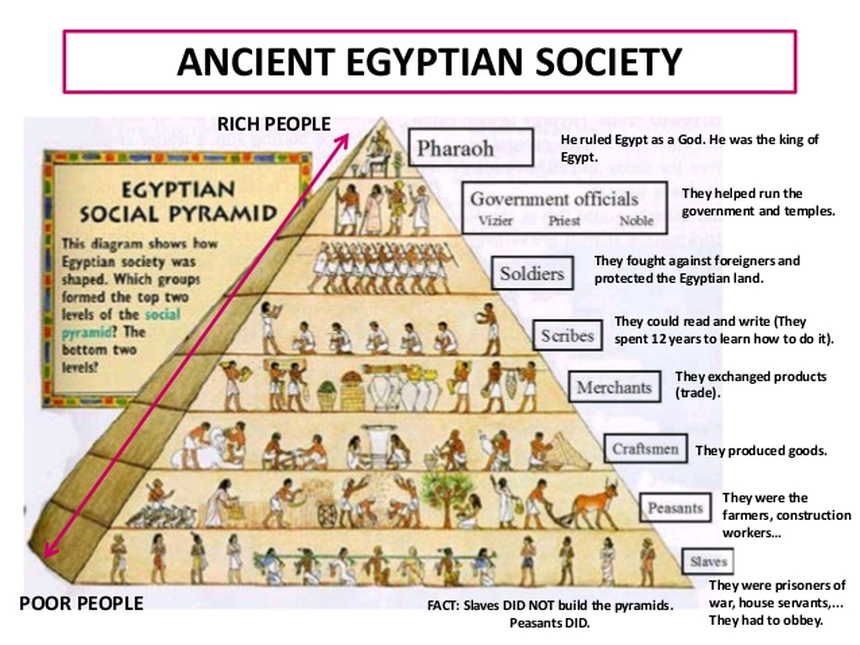
Funnily enough, the only non food-producer societal role Somalis historically really respected were that of the ruler, the warrior and the priest (i.e. a Wadaad) which, if I'm not mistaken, is the same in the rest of the Horn.
Last edited:
Nilotic
VIP
Shimbiris
Is it possible that the Kulubnarti data pertains to the Beja of Lower 'Nubia' instead of the NS speaking Nubians?
People keep talking about how the 'Nubians' were language shifted Cushitics, but no one has been able to point to a time period or the events that led up to this apparent shift. I'm of the opinion that with the sole exception of the Beja, Sudan has always been a Nilo-Saharan stronghold.
Is it possible that the Kulubnarti data pertains to the Beja of Lower 'Nubia' instead of the NS speaking Nubians?
People keep talking about how the 'Nubians' were language shifted Cushitics, but no one has been able to point to a time period or the events that led up to this apparent shift. I'm of the opinion that with the sole exception of the Beja, Sudan has always been a Nilo-Saharan stronghold.
Last edited:
Nilotic
VIP
Below is a paper on the relations between the Kushites of Meroe and the Nubians.

Claude Rilly ENEMY BROTHERS. KINSHIP AND RELATIONSHIP BETWEEN MEROITES AND NUBIANS (NOBA
11th Conference of Nubian Studies Warsaw University, Warsaw 27 August - 2 September 2006 Enemy Brothers. Kinship and Relationship Between Meroites and Nubians (Nuba). Dr. Claude Rilly, CNRS-LLACAN (Paris) Meroitic and Nubian languages have the same
www.academia.edu

